
Meet the herd – the eight wild bison on a wilding journey in Canterbury
Since bison were released into West Blean and Thornden Woods on the outskirts of Canterbury, they have not only transformed the landscape but significantly grown in number.

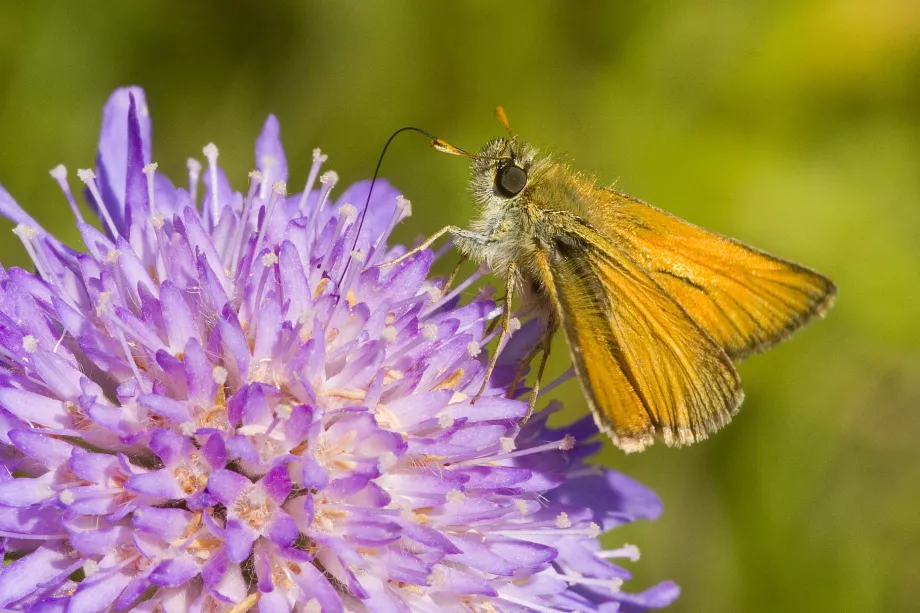
Small skipper Downe Bank ©Gareth Christian. Gareth Christian
After several recces (pre-filming visits) with the Planet Earth crew to discern exactly which spot of Downe Bank David should walk on, drone footage opportunities and lighting discussions to capture the reserve’s natural beauty, filming day was finally upon us.
It was an early start for me; I arrived at around 7am and helped the crew set up. Downe Bank, unsurprisingly, consists of a very steep bank, so helping the crew carry heavy camera equipment to the heart of the reserve was an early-morning workout.
Not long after, whispers began to circulate that Sir David had arrived with his daughter, Susan. I patiently waited my turn to introduce myself. His warmth and appreciation for the beauty of the reserve were evident, and the brief conversation we had left a lasting impression. It was a real ‘pinch me’ moment, meeting the man who had influenced my life, as well as countless others’, to pursue a career in conservation and the protection of nature now and for future generations.
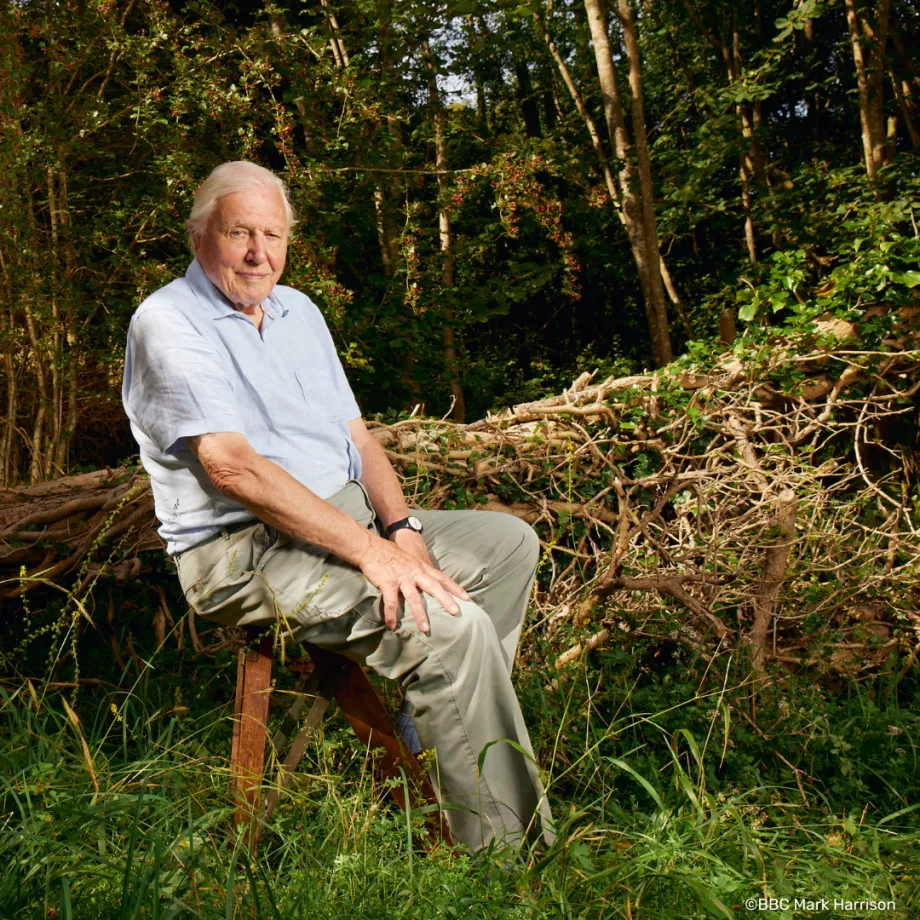
David Attenborough at Downe Bank Nature Reserve ©️BBC Mark Harrison
Then, it was straight to work. The crew carefully escorted David up the bank as he walked the very steps that Charles Darwin had traversed centuries before amidst orchids, wildflowers and butterflies It was an extremely special moment to hear Sir David say ‘Welcome... to Planet Earth’ in real life in the same way that had captured the attention of people around the world.
The most dramatic moment of the day was when a very loud lawnmower started up in the field below us, ruining the sound of every shot. I was tasked with locating this mystery lawnmower and persuading them to pause just for as long as it took for the perfect take.
At the end of a long day of filming, I presented David and Susan with a letter I had written on behalf of the Trust, expressing our admiration and gratitude for his lifelong dedication to conservation. To our astonishment, a few weeks later, we received a heartfelt handwritten reply from Sir David himself. His words were filled with gratitude, humility and encouragement. It was an incredible gesture that just highlighted his commitment to advocating a deep connection between humanity and the natural world.
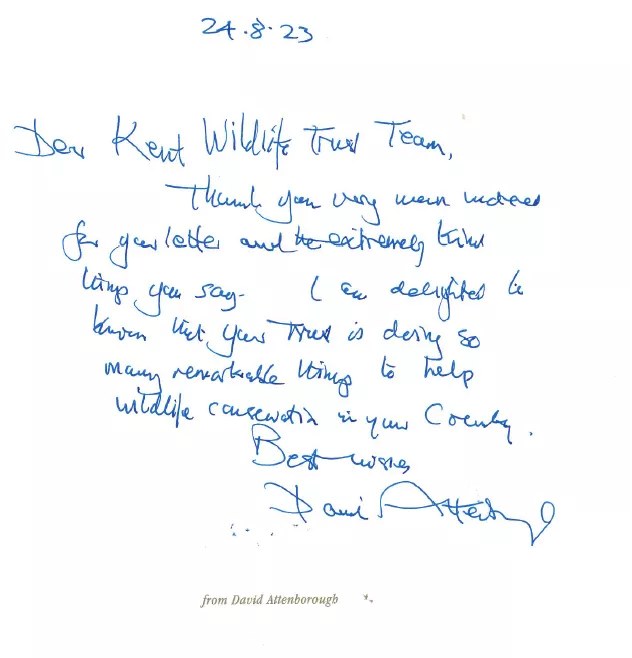
Handwritten letter from Sir David Attenborough
Then, on Sunday 22 October at 6.15pm, alongside millions of others, I watched as Sir David materialised on our screens at Downe Bank as he welcomed viewers to the new series (with no sound of a lawnmower anywhere to be heard, I might add).
Despite the global, exotic locations covered in BBC Planet Earth III, it was Downe Bank that stole the hearts of the series producers; when asked about any unique wildlife encounters he had experienced in the making of the programme, Executive Producer Mike Gunton said:
“My answer might surprise you because it doesn’t involve a remote location or an exotic species. It was actually a very simple moment. Our final day of filming for the series was with David in a quintessential English flower meadow on a sunny late summer's day. It was the very meadow that Charles Darwin used to observe and explore while he ruminated on his theories about the natural world and evolution.
“Both David and I said it was truly magical and it gave me hope that if we can protect and restore and allow nature to work its miracles, then future generations will be able to experience that magic for many years to come.”
This sentiment was also echoed by Series Producer, Matt Brandon, who said: “That day we spent filming at Downe Bank Nature Reserve in Kent, with David, was just one of the most glorious days we had on set. It was peaceful, the sun was shining, the air was filled with butterflies and the grass was humming with life.
As natural history filmmakers we are lucky enough to travel all over the world, but I’m equally amazed by the wildlife here at home. We must remember to appreciate the wildlife we have on our doorstep - it’s so special and needs our protection just as much as wildlife overseas.”
For myself, meeting Sir David Attenborough amidst the stunning surroundings of Downe Bank Nature Reserve on a beautiful summer’s day was a once-in-a-lifetime experience. It not only deepened my appreciation for the reserve's history and the beauty of its wildflowers and butterflies but also left me with an enduring sense of hope and inspiration to continue advocating for the preservation and restoration of the wildlife wonders found right here in Kent.
To help support and maintain our reserves, become a member from just £3 per month.

Since bison were released into West Blean and Thornden Woods on the outskirts of Canterbury, they have not only transformed the landscape but significantly grown in number.
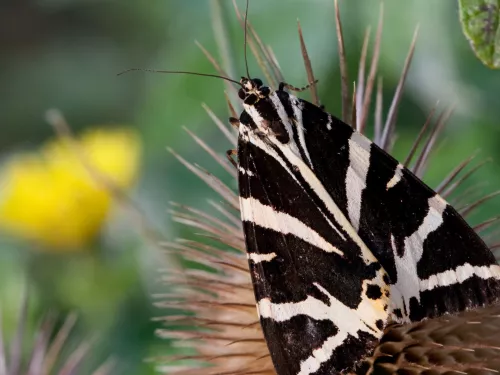
Margery Thomas, Hothfield Volunteer and regular columnist looks at the lack of butterfly sightings in recent months, the work volunteers are doing to remove bracken and how this all impact the wider management of the last remaining fragments of heathland…
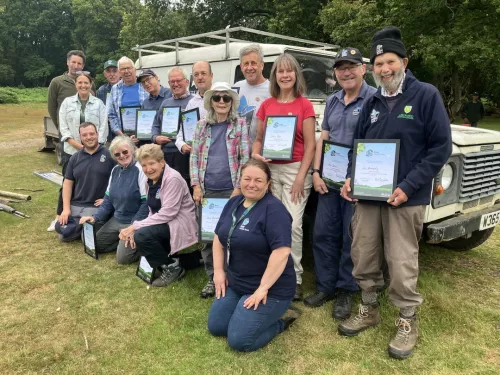
By August, floral glory has passed from the orchids (heath spotted, southern marsh and a few large hybrids) to the heather or ling. As ever, we hope for a protracted display of purple in the heathy areas, which is likely if the cool nights persist. Orchid…